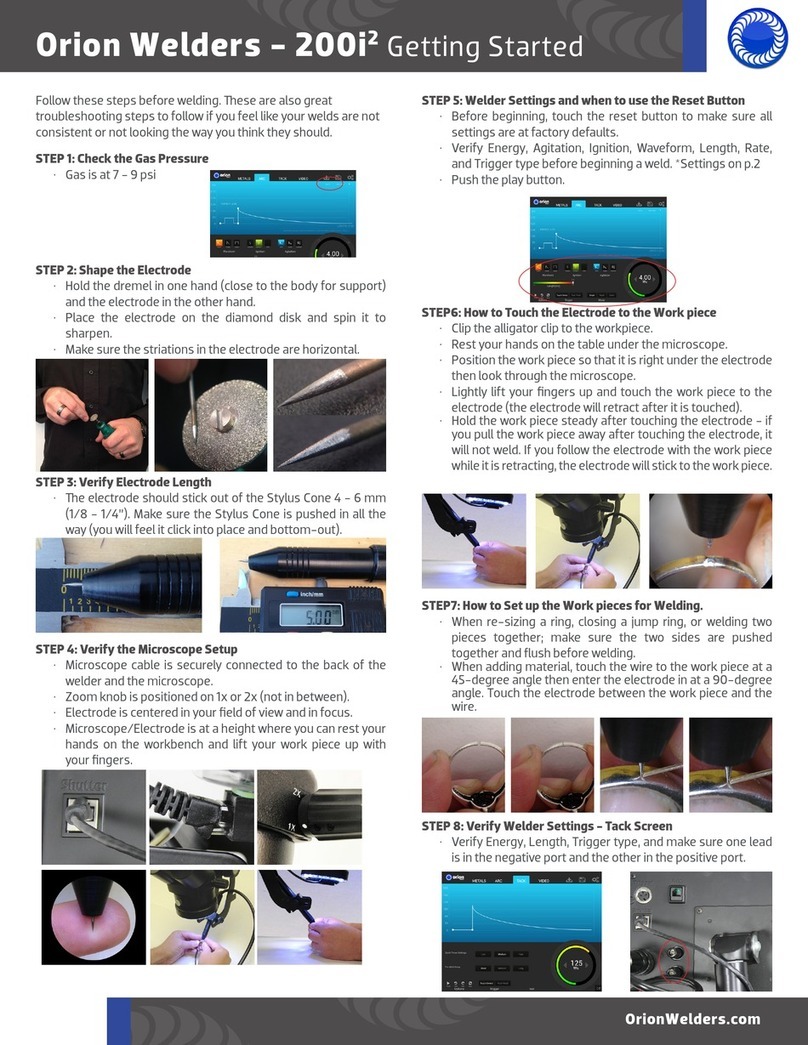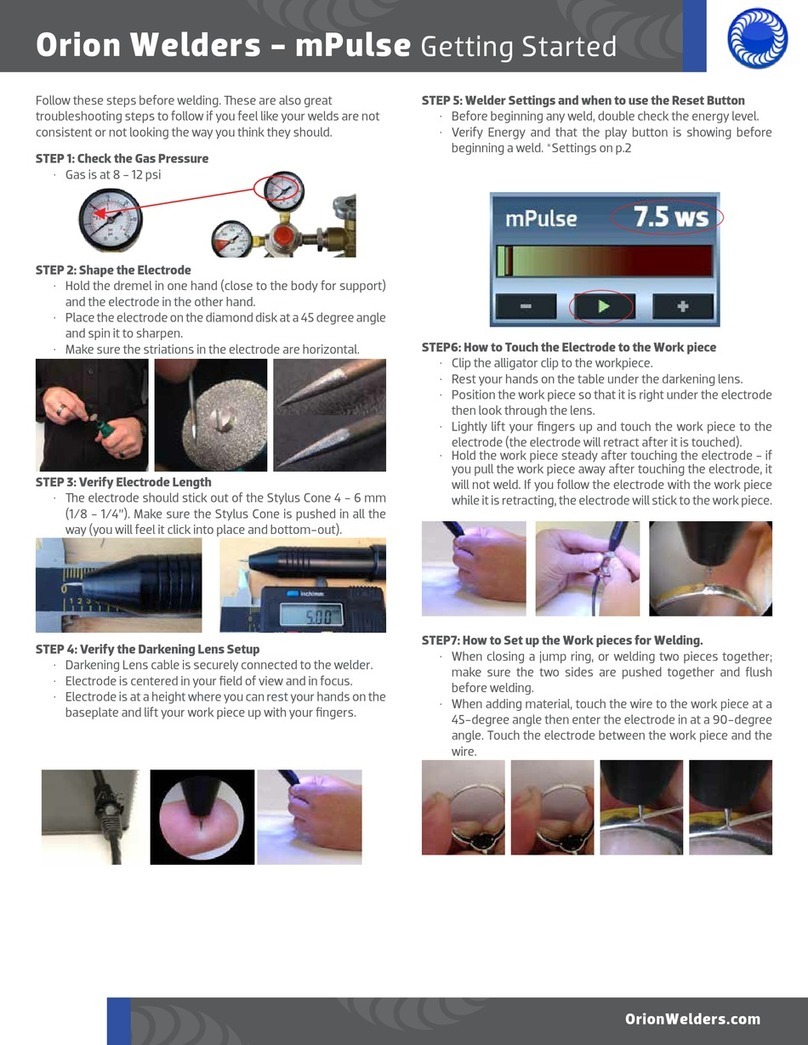8
Sunstone Engineering and Orion Welders
CONTRACTUAL GUARANTEE / WARRANTY
Sunstone Engineering guarantees this product will be free of any defects for the duration of two
years from the date of purchase. e warranty covers all components excluding the following: the LED
lamps found in the weld chamber, fuses, protection glass, fire lens and all consumable material. Sun-
stone Engineering will, at its discretion, chose to repair or replace any defective part during the 2 year
warranty period. If an issue should arise during the 2 year warranty, Sunstone Engineering will be re-
sponsible for any costs associated with the repair or replacement on any components, excluding any
shipping costs. Any damaged and replaced parts will become property of Sunstone Engineering. Any
replaced or repaired parts will also be covered under this guarantee until the 2 year term is expired.
e guarantee is void under the following circumstances:
• e buyer fails to report to Sunstone Engineering any initial defects or issues due to shipping
within seven days from the installation date.
• e device or its parts have been used in a way different from that which it was intended to be
used.
• e device has been entrusted for repair to an unauthorized agent or company, or the device or its
pieces have had some modifications not authorized by Sunstone Engineering.
• e recommendations and procedures regarding the use and the maintenance of the machine
found in this manual have not been respected and followed.
• e warranty seals and stickers on the machine have been removed or broken without authoriza-
tion from Sunstone Engineering.
Any other defects or damages caused by normal wear and tear are also excluded from the warranty.
If there is a defect during the warranty period, Sunstone Engineering will take action to completely
resolve the problem in accordance with this guarantee.
Sunstone Engineering Stamp or sign for acceptance of the
included warranty conditions






























